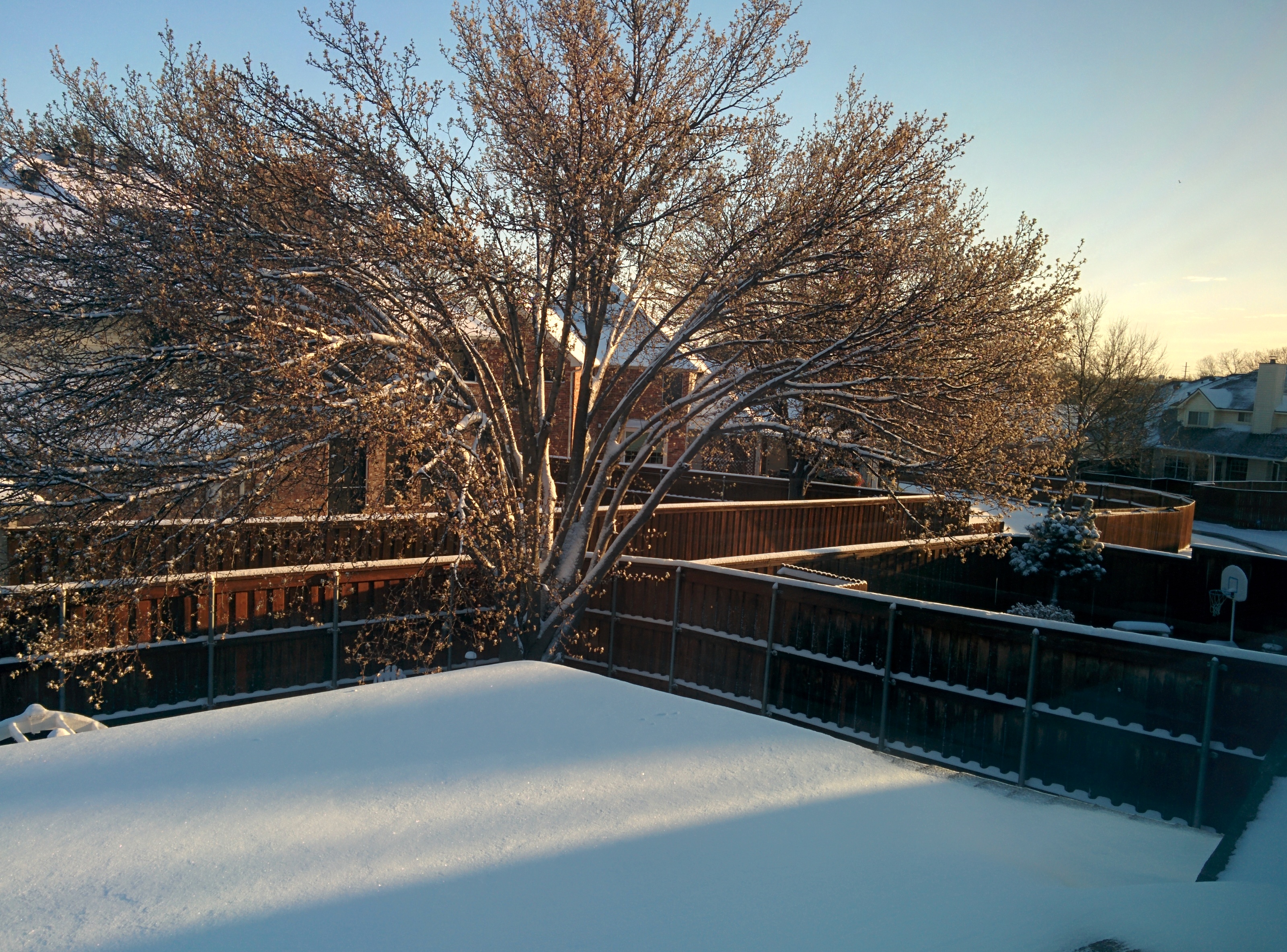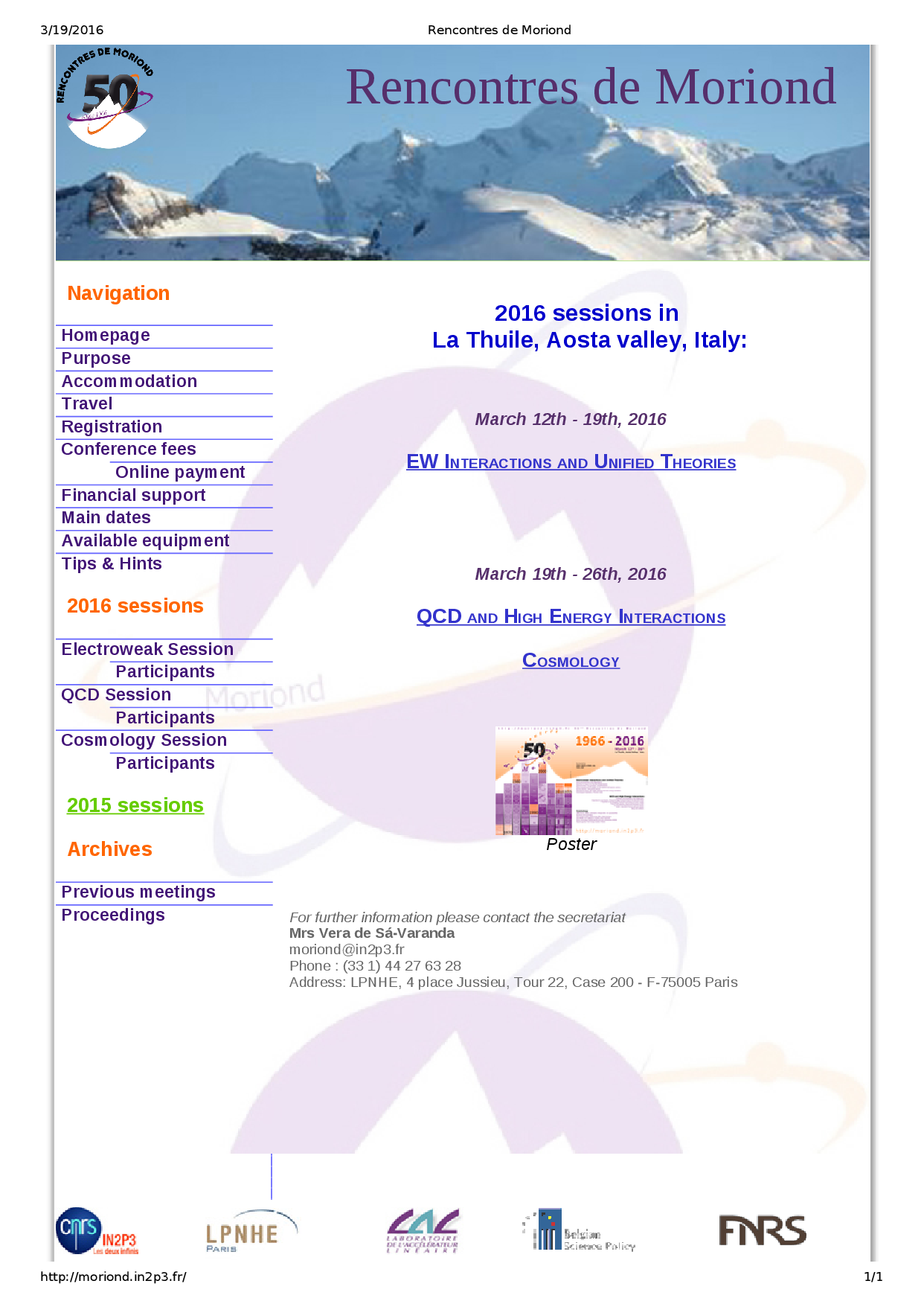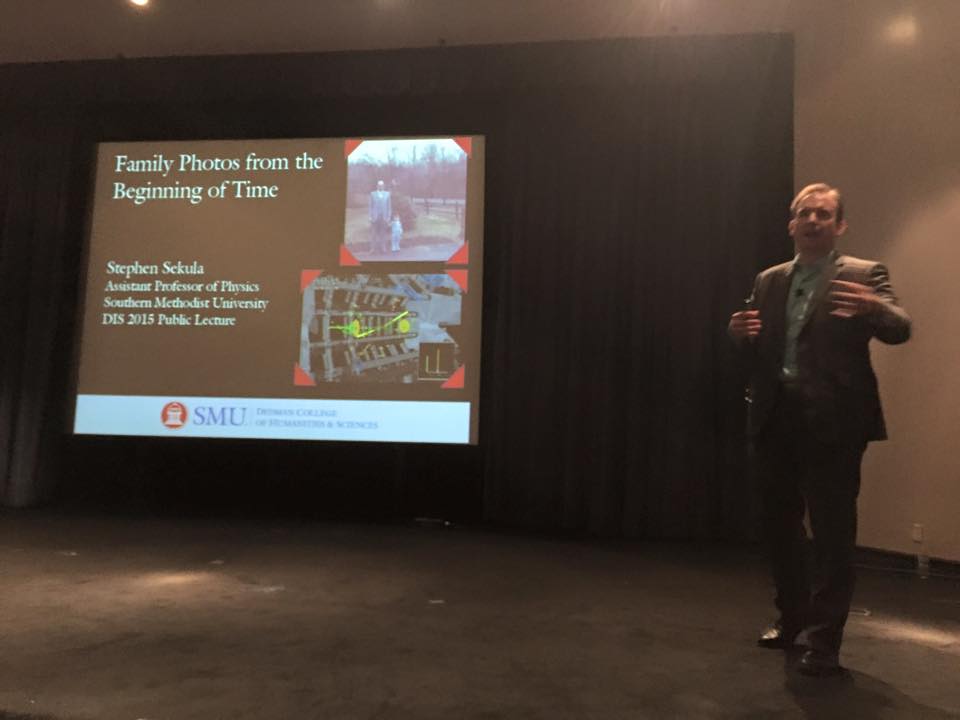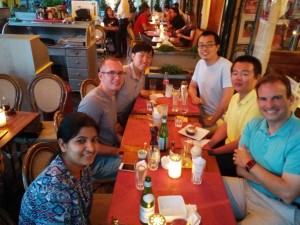
It has been an exciting couple of weeks since arriving at CERN. I have been bouncing from hotel to hostel, but mostly getting some physics done. I even found time to take a weekend in Barcelona and visit an old friend of mine. But, the work continues. Meantime, here are some highlights from the last couple of weeks. The first real data for first physics studies arrived on disk from the LHC; ATLAS has one of its “ATLAS Weeks,” the first since data-taking started; I went to Barcelona for the very first time and had my first restful weekend in weeks; some of our contributions to the beginning of Run 2 ATLAS physics have been making the rounds inside the collaboration; we have started to hammer ManeFrame, the SMU computing cluster, to see if it can handle physics analysis in Run 2. Oh, and I have been putting together my part of the new 3-year physics proposal to the US Department of Energy.
Let’s take a look at the highlights, one at a time.
The first real data arrives in ATLAS
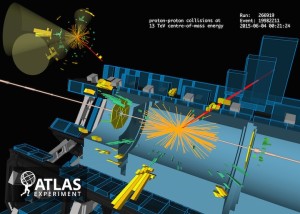
After a whole lot of milestones as the LHC came back online, ramped up to 13 TeV collision operations, and then delivered the first “test collisions,” it delivered the very first “physics quality” data that the experiments can use to shake down their detector systems. This is not data for discovery . . . unless you mean “discovering all the nifty things that need to be understood about your own experiment.” If you mean that, then we are in full swing!
It’s been extremely exciting. The data has been in processing at CERN and a lot of it has become available within the collaboration to begin studying our ability to model data in Run 2. It’s just a trickle right now, but these important collections of events will pave the way to a full understanding of our newly operating experiment. This, in turn, will enable reliable efforts to study Standard Model physics, including the Higgs boson, and begin to look again for physics beyond the Standard Model.
We’ve been bringing data down to SMU and starting to analyze it on ManeFrame, the newly commissioned cluster of computers. We’ve had a few bumps, but overall things are going very well.
ATLAS Week!
The first rule of ATLAS Week is that you don’t talk about ATLAS Week outside of ATLAS. But I can say that it was really exciting to see my far-flung colleagues regroup at CERN again. Many people came for the week and participated in the talks and discussions of the first data. This was our first ATLAS Week since long before LHC beam operations began, so it was a chance to see how far we have come since the beginning of the year and how much our planned improvements have been taking root. I am sure the collaboration will make public some of our initial studies in the coming weeks, but I am excited to have had a chance to see “the full picture” of ATLAS physics over the week. It was exhilarating and exhausting all at the same time.
Barcelona
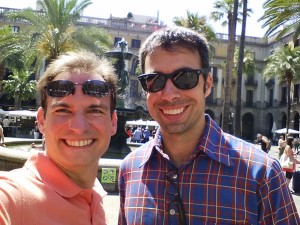
My very good high-school friend, Eric, is living in Barcelona with his spouse and newborn son. His spouse is a professor and is on sabbatical conducting research in Barcelona. Since he is a writer (and thus portable) the situation could not have worked out better. They invited me to visit them at their place in the city, so I hopped on an EasyJet flight and headed to Spain on the Friday afternoon after ATLAS Week has closed.
They are living in a really cool part of the city, just a few blocks from the beach on the gorgeous Mediterranean. Eric had arranged a tour of a Spanish Civil War-era bomb shelter built into the foot of the Montjuic, but other than that we didn’t made too many firm plans and basically just hung out at home or headed out for walks to explore parts of the city. It was really fun to go all together, including their newborn son, who is a seriously happy kid. I learned a little about Catalan culture, got introduced to Basque restaurants and in general to the “Spanish meal plan” (which I actually rather enjoyed), and enjoyed life. It was a nice break from the “working weekend” that had preceded it.
Making progress in ATLAS for Run 2
When you set out on a particular path, there is a part of you that always has a nagging doubt about whether it was the right one. Nigh on two years ago, I made the decision that for Run 2 I would push in a new direction in ATLAS, one with a coherent overarching theme for Run 2. I tend to do this from time to time, especially when I have been doing something else for too long. I spent all of Run 1 invested primarily in the search for the electrically charged Higgs Boson, a non-Standard Model cousin of the known Higgs boson that could signal the existence of Supersymmetry. However, I couldn’t see myself continuing on that in Run 2. It feels to me, after a time, like getting stuck in a physics rut, and boredom is bad. So I pushed in a different direction, one more tied to the use of bottom-quark jets for various Higgs physics projects in Run 2.
Of course, I am a professor; that makes me almost functionally useless to a collaboration. I am very lucky to work with younger people in our group who are devoted full time to the act of research, including one graduate student and a post-doctoral researcher. Together, the both of them have been making coherent contributions to both triggering on bottom-quark-initiated jets and on how to handle data/Monte Carlo simulation differences for Run 2. It was just prior to ATLAS Week that their long work culminated in results that were presented in at least two plenary talks and at least one parallel session talk during the meeting. Of course, nobody on ATLAS works in a vacuum and these two are part of a network of people that together made these successes possible. That said, it was nice to see their names featured prominently on slides about this work, a sign that their contributions are well-recognized. What more can a faculty mentor ask for in a 3000-person collaboration? It seems the push into bottom-quark jets in Run 2 is about to begin paying off big, and I am excited for the physics prospects of the technology and techniques that resulted so far from this fresh direction (well… fresh for me).
Proposal
A deadline is approaching for us to submit to the US Department of Energy our group proposal for activities for the next 3 years, starting in 2016. I’ve been putting time and energy into crafting the bits that I am contributing to this proposal (there are 4 total ATLAS faculty at SMU, so we have overlaps and non-overlaps and writing this is a team effort). This has been rewarding, as I am not only ahead of schedule but also thinking very coherently about what the period 2016-2019 will look like. The more I do, the more excited I am about this crucial phase of the Large Hadron Collider and ATLAS physics programs.

